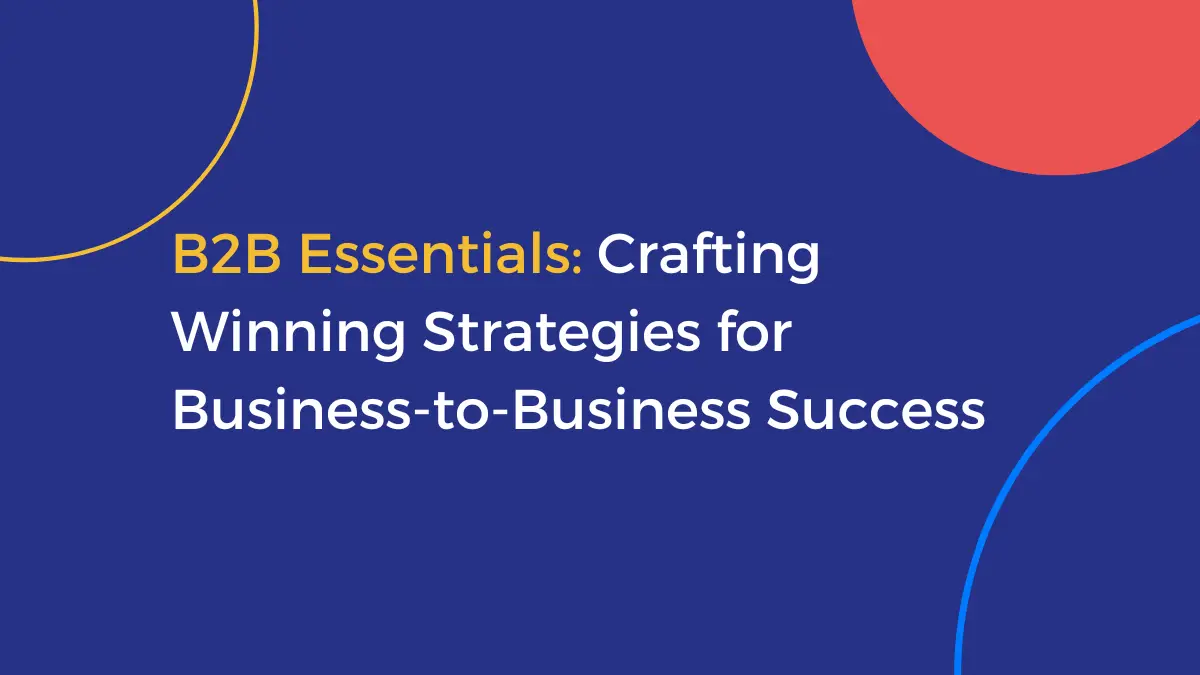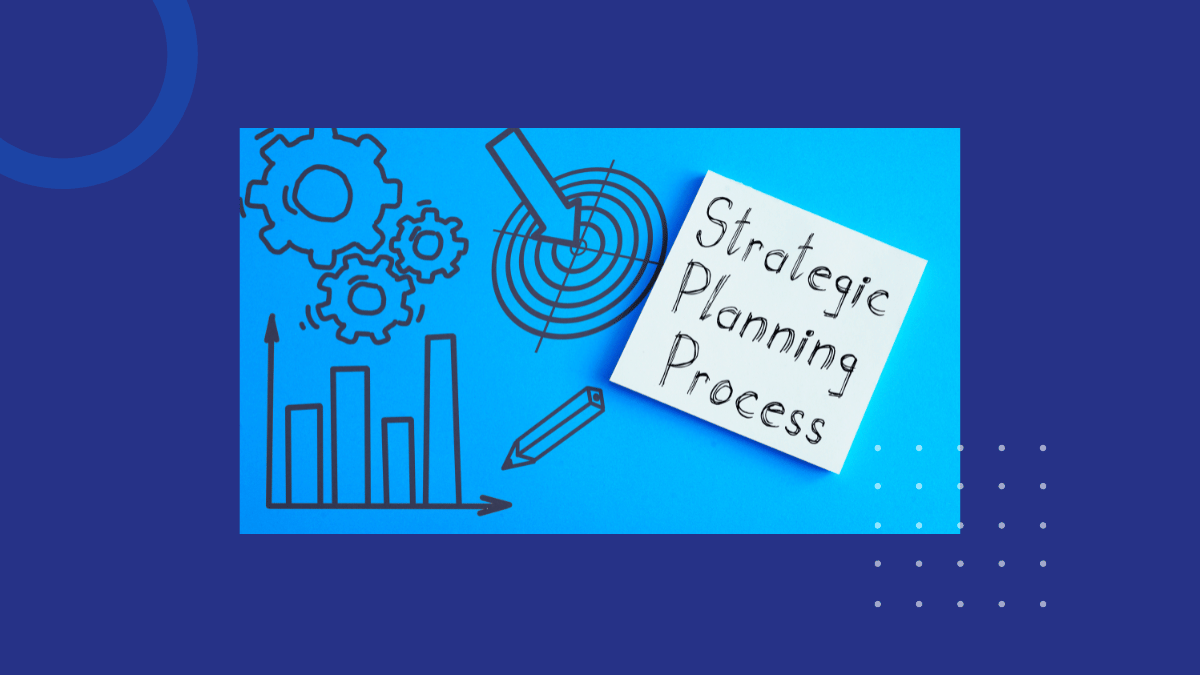
What distinguishes successful B2B companies? It’s not just selling to businesses; it’s creating value and forging lasting relationships. In this article, we delve deep into the essentials of B2B interactions, offering concise strategies for those looking to make their mark. Whether you’re starting fresh or refining your approach, we provide the foundation you need to succeed in the vast B2B domain.

At its core, the business-to-business model is a relational framework where one business provides products or services to other businesses. The product or service being traded can range from:
This model, essentially the backbone of the supply chain, is crucial for the business ecosystem, as every business, whether a fledgling startup or a seasoned enterprise, relies on other businesses to launch, operate, and grow.
Contrasting this with the Business-to-Consumer (B2C) model, which typically involves a manufacturer selling directly to the consumer, the Business-to-Business model is often characterised by interactions between a manufacturer and a retailer. These business-to-business transactions are usually facilitated by a dedicated sales team within the selling business, underscoring the importance of professional relationships in the business-to-business marketing domain.
As a business aiming to succeed in the B2B landscape, identifying your target audience is paramount. This involves a deep understanding of customer segments and the various stakeholders within a business, including:
In the B2B marketing arena, buyer personas are detailed profiles representing the individual consumers who make critical decisions within a company. The segmentation of these personas can be based on a variety of factors, including:
Knowing your buyer personas is not just about demographics. It’s about understanding their:
This information can be a goldmine for crafting accurate and engaging buyer personas.
Understanding your clients’ specific needs and pain points is another essential aspect of B2B marketing. It’s not just about knowing what they want; it’s about understanding why they want it and how your product or service can provide it.
By tailoring your marketing and sales approaches based on your clients’ needs, you can enhance the effectiveness of your strategies. Recognising the client’s pain points and adjusting your strategies to address these challenges can be the game-changer that sets your business apart from the competition.

Developing a successful B2B marketing strategy requires a clear vision, specific business objectives, and a deep understanding of the buyer’s journey. This strategy combines traditional tactics and modern digital tools to create a comprehensive approach that caters to the unique dynamics of B2B marketing.
In today’s digital age, platforms like LinkedIn, Google, and Bing have become indispensable tools for B2B marketing. LinkedIn, with its tailored environment for B2B marketing, digital marketing, and social media marketing, is the most-used social media platform in this domain.
Beyond LinkedIn, platforms like:
Company websites are also vital for enhancing reach and brand visibility through search engine optimisation. In addition to social media, maintaining a high-performance website serves as the central hub for a firm’s online presence, offering a resource-rich environment where potential B2B clients can experience a firm’s expertise.
Creating engaging content is a powerful tool for capturing the attention of B2B prospects. Senior-level decision-makers allocate a minimum of one hour per week to read thought leadership content, which they utilise to assess vendors and solutions. Studies have indicated this trend in their behaviour.
Educational content such as white papers or insightful blog posts can successfully capture a B2B prospect’s attention, while webinars aid in nurturing B2B audiences over time. The key is to create content that is both personalised and relevant to the targeted business audience, highlighting product advantages and differentiating B2B offerings.

B2B sales are a unique beast, often involving high deal values, longer sales cycles, and approval from multiple decision-makers. Consequently, significant financial investments are usually at stake, necessitating a strategic approach by the sales team.
In the world of B2B, relationships are everything. They often require nurturing through professional interactions before successful sales can be made. To build strong B2B relationships, companies should prioritise solving buyer problems, adding value over emphasising price, and focusing on personalised, patient interactions to build trust over time.
Staying in touch with decision-makers on a monthly basis helps make your company familiar to them, showcasing how it’s helped other clients. Humanising a brand through company stories and personal engagement is key to establishing trusted partnerships in B2B relationships.
Navigating complex sales cycles in B2B transactions requires a structured, multi-stage process, including prospecting, qualification, and closing. A customer-centric sales process focuses on stages and activities aimed to understand the customer and advance the sale, improving the likelihood of achieving revenue targets.
Identifying key stakeholders in the buying process is crucial, as they range from engineers to financial staff. Including buyer’s perspective milestones, like ‘decision team outlined,’ is a vital part of the sales process, demonstrating progress and aligning with the buyer’s journey.
Continual engagement with the buyer and maintaining sales momentum are crucial to moving towards a purchasing decision and preventing the sales cycle from stalling.

The B2B e-commerce market is growing at an unprecedented rate, driven by technological advancements, increased online purchasing preferences, and improved user experiences.
One of the innovations driving B2B e-commerce growth is the rise of procurement exchanges. These platforms have been revolutionising the way businesses manage the procurement process, offering larger businesses and public sector organisations pre-approved, pre-priced lists of goods and services.
Initially, these exchanges were developed by large corporations to manage vendor relationships and procurement processes. This inspired the creation of third-party B2B exchanges, leading to the advent of internet-based B2B marketplaces that allow for real-time online buying and selling.
Another significant innovation in B2B e-commerce is the integration of Customer Relationship Management (CRM) software. CRM systems are instrumental in managing and nurturing leads as well as maintaining client information in B2B companies.
These systems help B2B businesses:
The implementation of B2B business models spans across numerous industries. Prominent sectors such as information technology, construction companies, and office supplies have been harnessing the power of B2B to their advantage.
Learning from the best can often provide valuable insights. Case studies from leading B2B companies illustrate effective strategies that result in measurable benefits. Some examples include:
These case studies not only showcase tangible benefits but also underscore the importance of choosing the right strategies and tools for significant improvements in business outcomes.
While the B2B landscape presents a plethora of opportunities, navigating its challenges is an integral part of the journey. B2B businesses encounter challenges such as managing cash flow, driving continual innovation, and maintaining customer loyalty, especially when dealing with business clients.
In the face of these challenges, it’s crucial to rely on an appropriate combination of contractual and relational mechanisms to connect with the right customers. Additionally, sustainability has become a significant factor in maintaining B2B client relationships, with an increasing tendency of buyers to end relationships with companies that do not prioritise sustainability or social issues.

Despite challenges, the B2B landscape is teeming with opportunities. Networking at industry conferences increases brand visibility and attracts potential buyers, while B2B events can reach customers more efficiently through the longer sales cycles in B2B transactions.
Innovation is another avenue for opportunity, with hard work, perseverance, and an experimental approach leading to product enhancements and increased customer loyalty. Moreover, the importance of exceptional customer experiences cannot be overstated, with satisfied customers generating a significant percentage of B2B leads through referrals.
Navigating the B2B landscape can be a complex yet rewarding journey. With a clear understanding of the B2B model, a focus on identifying your target audience, strategic marketing, efficient sales techniques, and harnessing the power of innovations in e-commerce, B2B companies can maximise their opportunities and overcome challenges. The journey may seem daunting, but with the right strategies, tools, and mindset, the road to B2B success is within reach.
The primary distinction between the B2B and B2C models is that B2B involves transactions between businesses, while B2C involves transactions between businesses and individual consumers.
Understanding buyer personas benefits B2B marketing by enabling businesses to create personalised and engaging marketing strategies. This leads to more effective targeting and higher conversion rates.
Digital platforms like LinkedIn, Google, and Bing are essential for B2B marketers, improving reach and brand visibility in the market. They play a crucial role in expanding the business’s presence and connecting with potential clients.
Procurement exchanges are revolutionising B2B e-commerce by simplifying vendor management and offering pre-approved, pre-priced lists of goods and services, streamlining the procurement process.
Some of the challenges faced by B2B businesses include managing cash flow, driving continual innovation, maintaining customer loyalty, and prioritising sustainability. It is important to address these challenges in order to thrive in the B2B market.
Subscribe to our fortnightly newsletter to hear about our latest podcasts, blogs, career advice & jobs.